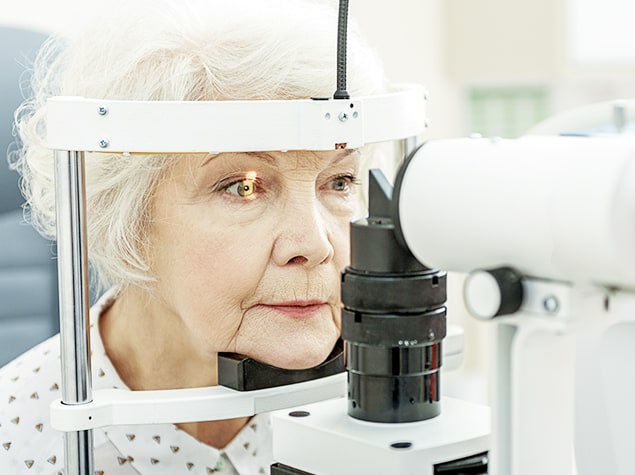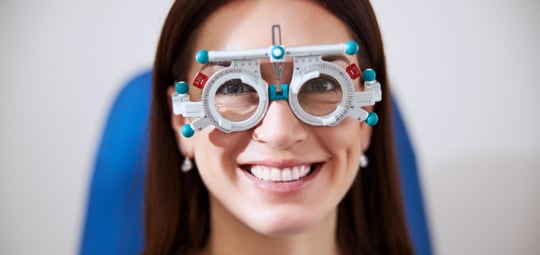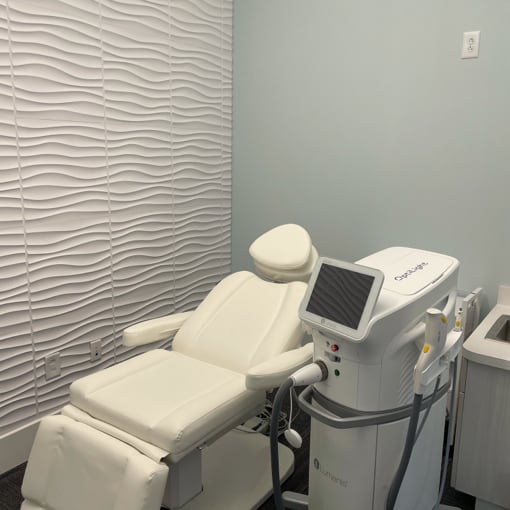What You Should Know About Eye Disease
Eye disease is a broad term covering everything from the simple to the serious. Although eye disease is more common as we age, anyone can experience changes to their ocular health. Eye exams are the best chance to diagnose eye conditions and learn how to maintain your vision. Book an appointment to find out more about your eye care needs.


Common Types of Eye Diseases
Our eyes are open to a world of experiences. Unfortunately, our vulnerable eyes are also open to common types of eye disease. You might have heard of common eye conditions like styes (hordeolum) or pink eye (conjunctivitis).
But there are other common eye diseases and conditions that can affect your ocular health.
Age-related Macular Degeneration
Age-related macular degeneration (AMD) is a common condition that affects central vision. Our central vision includes what we can see directly in our line of sight. It’s crucial for perceiving and focusing on visual details.
There are two types of AMD: dry and wet.
Dry is the more common type. It typically progresses slowly, following a gradual thinning of the macula. It contains three stages, early, intermediate, and late. Management and treatment options depend on the stage, with the greatest vision protection available in the early stage.
Wet progresses faster and occurs when the growth of abnormal blood vessels damages the macula. Wet AMD develops from dry AMD, typically in the later stages.
Symptoms vary depending on the stage of degeneration, but include:
- Blind spots
- Blurry vision
- Crooked or wavvy vision
- Poor low-light vision
- Dimmer color vision
Blepharitis
Blepharitis is caused by bacteria found in the skin around your eyes. A buildup of bacteria at the base of your eyelashes or clogged oil glands around your eyelids can lead to blepharitis.
The common symptoms include:
- Inflammation
- Itchy eyes
- Foamy tears
- Blurry vision
- Light sensitivity
- Redness
- Dry eyes
- Unusual eyelash growth
- Eyelashes falling out
- Crusty eyelids or eyelashes
The best prevention method is to keep your eyelids and skin clean. Warm compresses can help alleviate the early symptoms. However, if the symptoms continue or progress, it’s advisable to book an appointment with an eye doctor.
Cataracts
A cataract is a cloudy or blurry area that appears in the lens of your eye, usually occurring as a result of aging. Typical cataract symptoms include:
- Cloudy or blurry vision
- Faded color vision
- Poor night vision
- Halos around lights
- Double vision
- Frequent prescription changes
The minor symptoms of cataracts can be managed with prescription lenses and adjustments to your routines. Severe symptoms might require other treatment options, such as laser eye surgery
Flashes and Floaters
Flashes are streaks or flashes of light in your field of vision and can often occur alongside migraines. The strange sight is caused when the vitreous of your eye rubs or pulls against your retina.
Floaters are unusual shapes that appear in your vision, such as clumps, strings, specks, dots, or lines. Although the shapes might seem to be on your eye or in front of your vision, it is actually caused by cells floating inside the vitreous area of your eye.
Although most flashes and floaters on their own can be harmless, they are often an indicator of other serious conditions. If you experience flashes or floaters frequently, an increasing occurrence, or a change in vision, you should call your eye doctor immediately to assess your eye health.
Glaucoma
Any of the many types of glaucoma result from damage to the optic nerve. Located in the back of the eye, the optic nerve is responsible for the brain-eye connection that allows us to interpret what our eye sees.
As the disease progresses, more vision loss occurs, beginning with peripheral (side) vision. Changes typically occur slowly, which can make it challenging for individuals to detect. Regular eye exams are the best option to diagnosing glaucoma and preventing blindness.
Diabetic Eye Disease
Diabetic eye disease is a group of conditions that affect your eyes if you are living with diabetes. Some of the associated conditions are cataracts, glaucoma, diabetic macular edema (DME), and diabetic retinopathy.
Many of the symptoms can be managed or treated if diagnosed early. Often symptoms of diabetic eye disease include:
- Blurry vision
- Flashes of light
- Poor color vision
- Vision loss
- Dark areas
Dry Eye Disease
Your eyes produce a constant layer of moisture to protect your eyes and reduce the risk of infection. When you’re unable to produce enough tears or quality tears, you notice the difference.
Dry eye disease can be managed, but it starts with diagnosing your eye health.
Some symptoms of dry eyes include:
- Dry eyes
- Burning eyes
- Redness
- Light sensitivity
- Blurry vision
- Excess watering
- Scratchy or irritated eyes
- Stringy eye mucus

Diagnosing Eye Diseases
Your eye care team will use various diagnostic tools to learn about your eye health. Many eye conditions can be managed or treated if detected early. Notably, regular comprehensive eye exams are the most effective way to prevent vision problems. The American Optometric Association (AOA) recommends adult eye exams every 2 years and children’s eye exams yearly after first grade.
Optos Retinal Exam
One of the tools used at Daniel Island Eye Care is the Optos Retinal Exam. As part of routine care, the exam maps and measures your retina—the part of your eye that receives and sends signals in response to light.
By monitoring eye health changes and trends, optometrists get a clearer picture of your unique eye care needs.
How You Can Manage Eye Health with Daniel Island Eye Care
Treating your eyes is as important as treating any other aspect of your health. Looking after your visual system can protect your vision and your overall health.
At Daniel Island Eye Care, we know healthy vision goes beyond 20/20. Our staff are enthusiastic about eye care and always ready to answer your questions. Book an appointment to learn more.
Our Location
Located between Charleston and Mount Pleasant, SC, you can find us at the corner of Daniel Island Drive and Seven Farms Drive, next to Orlando’s Pizza. We have parking in front and a large lot behind our building.

Clinic Hours
- Monday: 9:00 AM – 5:00 PM
- Tuesday: 9:00 AM – 5:00 PM
- Wednesday: 9:00 AM – 5:00 PM
- Thursday: 9:00 AM – 5:00 PM
- Friday: 9:00 AM – 5:00 PM
- Saturday: Closed
- Sunday: Closed



Our Brands





















